Water News from Near & Far - 2023
Water News from Near & Far
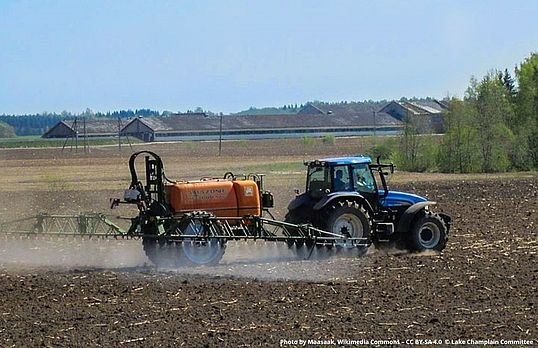
New VT Pesticide Regs Fall Short of Protecting Human & Ecological Health
The Lake Champlain Committee (LCC) collaborated with environmental organizations across the state of Vermont—including Northeast Organic Farming Association of Vermont, Audubon Vermont, Conservation Law Foundation, Vermont Public Interest Research Group, Vermont Natural Resources Council, and the Vermont chapter of the Sierra Club—to oppose new state regulations on pesticides. The State hadn’t revised its requirements for pesticide storage, application, and reporting for over 30 years but the adopted changes fall far short of what is needed in the face of climate change and species decline. The updated regs fail to provide protections for wild bee populations or to address the use of seeds pretreated with pesticide which comprise the majority of seeds planted in the state. They ignore the severity of the health hazard that pesticides pose to the environment as well as to individuals. When pesticides enter waterways, the chemicals can leach into drinking water supplies and can stunt aquatic life. They also harm sensitive pollinator populations and, according to the non-profit Farmworker Justice, cause those who work in agriculture to suffer more chemical-related illnesses and injuries than any other workforce nationwide. The new regulations maintain a status-quo regarding pesticide management instead of evolving to a system where pesticides are used as a method of last resort after evaluating alternative pest management measures. Read more about the issue in VTDigger.
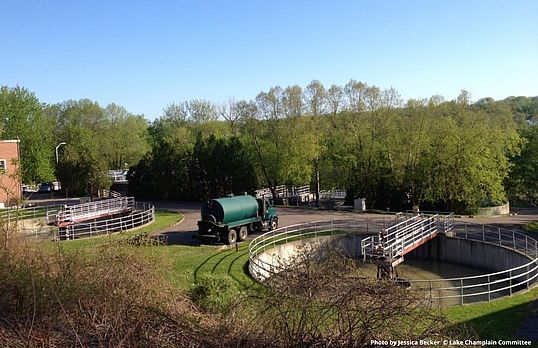
Covid Funds Will Help Improve Water Quality
Thanks to American Rescue Plan Act (AARPA) dollars, several communities in the Lake Champlain Basin in Vermont are poised to upgrade their wastewater treatment systems with the goal of reducing combined sewer overflows (CSOs). Roughly 700 municipalities across the US have combined sewer systems where rainwater runoff, domestic sewage, and industrial wastewater are collected into one pipe. Under normal conditions, it transports all of the wastewater to a sewage treatment plant for treatment, then discharges it to a waterbody. During heavy rainfall events or snow melt, the volume of wastewater can sometimes exceed the capacity of the combined sewer system or treatment plant. When this occurs, untreated stormwater and untreated or partially treated human and industrial wastewater, discharge directly to nearby streams, rivers, and other waterbodies. The $640 million in AARPA funds will also support revitalization of public water systems and assist businesses in upgrading stormwater treatments for parking lots and other impervious surface areas. Read this piece in VTDigger on how funds will be used to protect waterways.
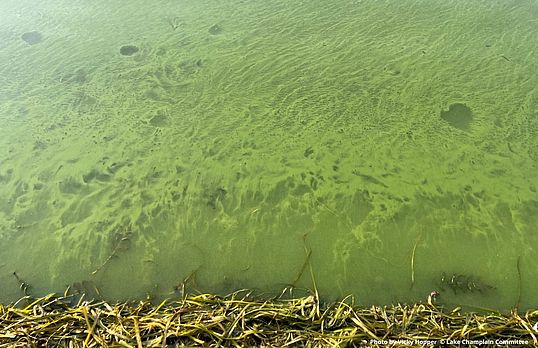
Lakes Are Salt Sensitive
A study published in 2022 in The Proceedings of the National Academy of Sciences (PNAS) found that current water quality guidelines for chloride in North America and Europe are insufficient for protecting lakes from salinization. Researchers found that “it takes less than a teaspoon of salt in five gallons (19 liters) of water to harm aquatic life.” That concentration is lower than the recommended limits of every nation included in the study. As concentrations increase, salt can have a cascading effect on the food web. For example, too much salt can kill zooplankton which feed on phytoplankton (microscopic plants) including cyanobacteria, allowing blooms to flourish. Salt can also mobilize mercury, lead, and other toxic substances threatening water quality for humans and wildlife. Learn more from this story in Ensia.
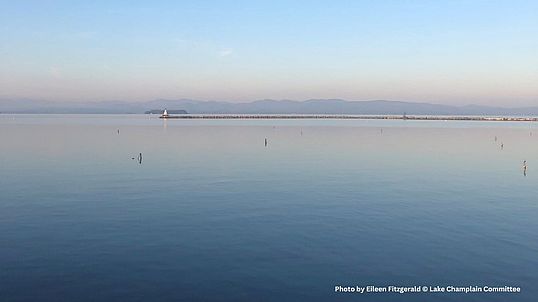
Warming Climate Triggers Harmful Oxygen Loss in Lakes
Research from Cornell and Rensselaer Polytechnic Institute indicates that thousands of temperate zone lakes around the world are “losing a global-warming battle to maintain oxygen.” Scientists looked at roughly 25 years of data from over 400 lakes and found a declining trend in dissolved oxygen. Climate change is warming the waters and preventing normal mixing, which oxygenates lakes. Aerobic aquatic species like fish need oxygen in water to survive, and this decline decreases their available habitat—particularly in cold, deep parts of lakes. Read more about the study in the Cornell Chronicle.
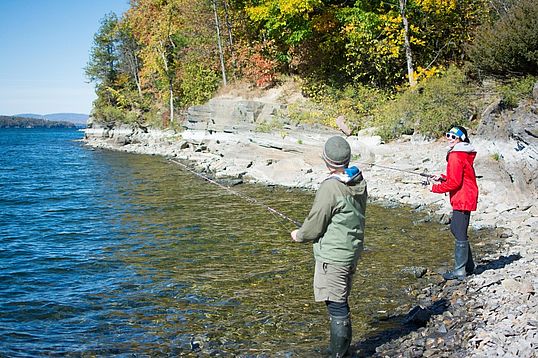
Concern Growing Over PFAs in Freshwater Fish
A new study published in the Journal of Environmental Research indicates high levels of Per- and polyfluoroalkyl substances, or PFAS, in freshwater fish across the US. PFAS are used in jet fuel, fire-fighting foam, and numerous household products including types of food packaging. Both New York and Vermont have passed PFAS regulations but the “forever chemicals” are highly persistent in the environment and in the body. They “bioaccumulate”—increase in concentration as they work up the food chain—in fish. Researchers based their conclusions on a review of fish samples from across the US over a two-year period. While the samples included many persistent chemicals, “the biggest contributor to total PFAS levels was the compound known as PFOS, responsible for about 74 percent of the total.” Although PFOS has been generally phased out of manufacturing (it was the main ingredient in the fabric protector Scotchgard), it resists environmental degradation. The study found that one freshwater fish serving can be equivalent to drinking water for a month at 48 parts per trillion (ppt) PFOS—which is an astounding 2,400 times the drinking water health advisory for PFOS from the Environmental Protection Agency. Eating one or more meals of fish per week is common among anglers, people living along shorelines, and communities where fish are a dietary staple or culturally important. “The researchers therefore characterized exposure to PFAS in freshwater fish as ‘a textbook case of environmental injustice’ in which certain communities are ‘inordinately harmed.’” Read more about this public health and environmental justice issue in The Hill.
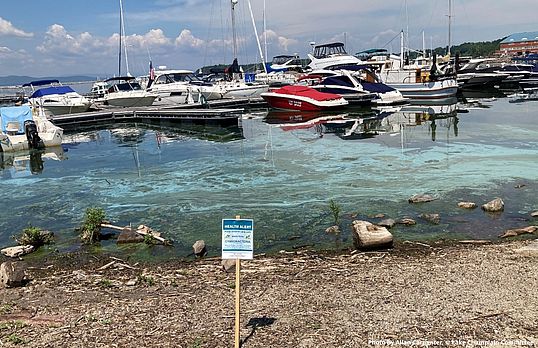
Cyanobacteria Blooms - an International Problem
Cyanobacteria blooms, also referred to as Harmful Algal Blooms (HABs), are on the rise in the US and around the world. According to a review by the International Joint Commission there were only 12 published accounts of HABs recorded in Canada and the US in the 1980s and 19 in the 1990s. By 2021 there were nearly 1,700 HAB related-warnings and health advisories in the US alone. HABs are now a major environmental issue in all 50 states and a growing concern worldwide. Climate change and nutrient pollution are the main drivers, with warmer water and changes in precipitation creating better conditions for blooms to develop and persist. Read how cyanobacteria blooms are “a threat to global water security” in this article from the BBC.